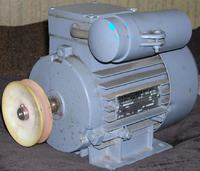Hello.
At the outset, I note that I am green in electricity and electronics.
My question is how to easily and cheaply adjust the speed of rotation of a 220V motor with a power of 1.1KW 1400 rpm. It would be best if it was a smooth adjustment, e.g. from 700 to 1400 revolutions. What to buy and how to connect? Regards.
At the outset, I note that I am green in electricity and electronics.
My question is how to easily and cheaply adjust the speed of rotation of a 220V motor with a power of 1.1KW 1400 rpm. It would be best if it was a smooth adjustment, e.g. from 700 to 1400 revolutions. What to buy and how to connect? Regards.





